Proper grooming can help dogs to live healthier
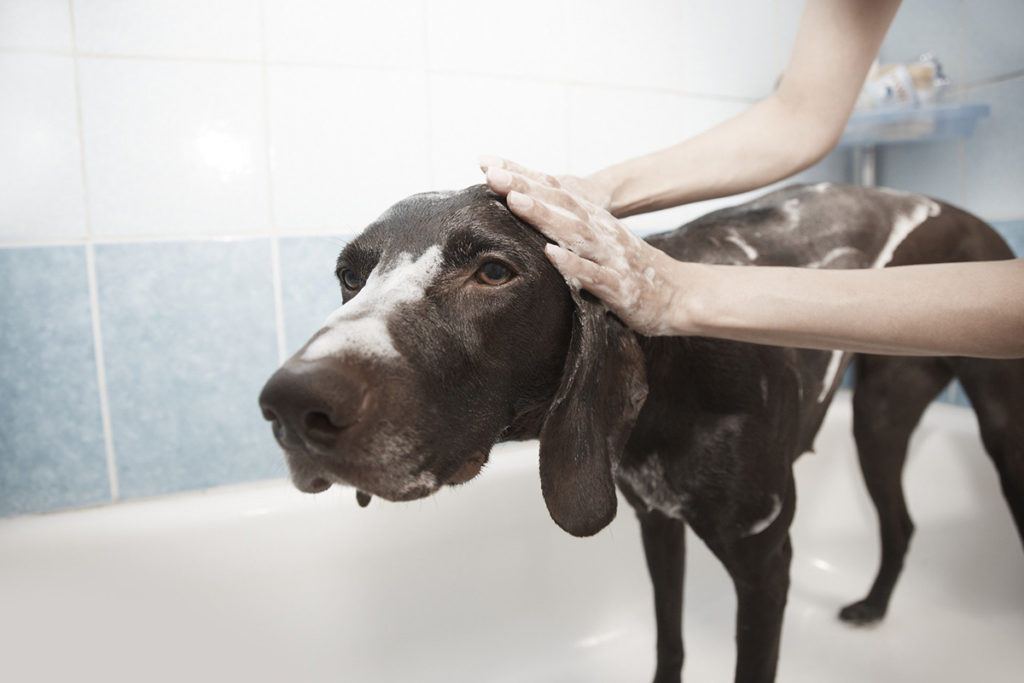
Dog grooming refers to both the hygienic care and cleaning of a dog, as well as a process by which a dog’s physical appearance is enhanced.
Grooming is a vital part in the well-being and healthiness of a dog, which can improve its quality of life. How much grooming a dog needs depends on its breed, age, and health. Regular grooming helps to ensure the dog is healthy and comfortable. While many dogs shed, others such as the poodle do not shed as profusely and require grooming every 4-8 weeks.
The main reasons for daily grooming include:
- decreased chance of various health problems, such as thrush, scratches, and other skin problems
- general cleanliness of the dog
- monitoring of the dog’s health by checking for cuts, hot spots, swelling, lameness, or changes in temperament, all of which could be indicative of illness
- forging of a closer bond between dog and owner
- reducing infestation load of external parasites on skin
- avoid matting that can potentially cause health concerns like skin irritation or the entrapment of harmful bacteria in the coat
Bathing:
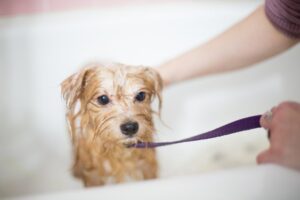
Dogs can be bathed in a sink, walk-in shower, or bathtub; they can even be bathed outside using a garden hose, provided that the water is sufficiently warm enough to prevent hypothermia. Dogs should be bathed with warm water, as hot water can scald the skin. Dogs with a heavy or matted coat should never be bathed without first being completely brushed out or clipped of any mats.
Many types of shampoos and conditioners formulated for dogs are available. For dense and double-coated dogs, pre-mixing the shampoo with water will help ensure a more even distribution of the shampoo.[5] Do not lather the head, as grooming products can be irritating if they come in contact with the eyes. Additionally, excess water may become trapped in the ear canal, leading to secondary ear infections.[6] Fully rinse the dog after shampooing, as residual chemicals may become irritating to the skin. Most dogs do not require frequent bathing; shampooing a coat too often can strip the coat of its natural oils, causing it to dry out.
Tooth Brushing:

Dental care is very important and can be addressed while bathing. The dental kits available on the market include everything from special toothpaste to toothbrushes. Many models of toothbrushes include a flexible three-head design, which maintains the proper pressure on all surfaces of the tooth with every stroke. These brushes have side bristles set at 45-degree angles to reduce arm twisting and soft outer bristles for massaging the gums. Toothpaste designed to be used on dogs is usually sugar free toothpaste with different flavoring. Although you can use human tooth brushes, avoid using human tooth paste as dogs usually eat the paste while brushing. Also, while using Pet Specific Tooth paste foaming or rinsing is not necessary.
Hair Brushing and Removal:
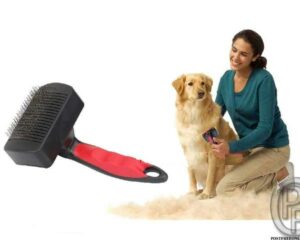
The coats of many breeds require trimming, cutting, or other attention. Styles vary by breed and discipline. While some hair removal has its origins in practical purposes, much is based on the taste of the owner, whether or not the dog will be shown, and what work the dog does.
The rubber grooming gloves and dog brushes are intended to drag loose hair from the short-coated dogs and are some of the most popular grooming tools amongst pet owners. They are easy to use by massaging the coat in firm strokes, and have the advantage of being suitable for both wet and dry coats.
Some breeds of dog, such as the Lhasa Apso, do not shed, but have hair that grows constantly. As such, the fur around the legs and belly can get very long and become matted, and the hair around the eyes can impair the dog’s vision. In such circumstances, hair trimming can be performed to keep the eyes clear and keep the coat free of knots.
Hand stripping:
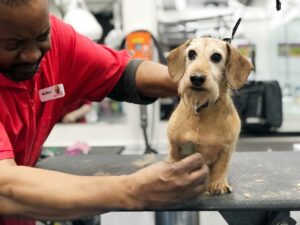
Stripping or hand-stripping is the process of pulling the dead hair out of the coat of a non-shedding dog, either by using a stripping knife or the fingers. A hard, wiry coat has a cycle where it starts growing and then sheds as it reaches maximum length. Hand-stripping coordinates the shedding and makes room for a new coat to grow. Stripping is the proper grooming method for most terriers, spaniels, and many other breeds. The hair is removed with either a stripping knife or stripping stone, with the top coat removed to reveal the dense, soft undercoat. If done correctly, the procedure is painless. Many dogs are reported to enjoy having their hair stripped, especially when they are introduced to it as puppies.
Nail trimming:
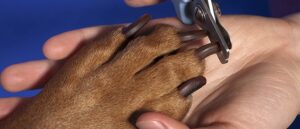
Nail trimming is essential for maintaining good health. If a dog’s nails are allowed to grow, they will curl over into a spiral shape; walking will become increasingly painful. Uncut nails may curl so far that they pierce the paw pad, leading to infection and debilitating pain. Long nails can put pressure on the toe joints, even causing the joints of the forelimb to be realigned. This can cause the animal to have unequal weight distribution and be more prone to injuries. Longer nails are also more likely to be forcibly ripped or torn off, causing serious pain to the animal.
It becomes increasingly difficult to maneuver nail clippers between the paw pad and tip of the nail as the nails grow longer. Owners may choose to trim nails themselves or may opt to take their pet to a groomer or veterinarian.
Nail trimming is done with a nail clipper. In addition, handheld rotary tools are often used to smooth sharp edges caused by nail clippers. There are two main types of nail clippers: guillotine trimmers and standard scissor- and plier-style trimmers. Guillotine trimmers have a hole at the end through which the dog’s nail is inserted; then, as the handles of the tool are squeezed together, an internal blade lops off the end of the nail. The scissor-style trimmer is most effective on nails that have grown too long and are now in the shape of a circle or coil.
